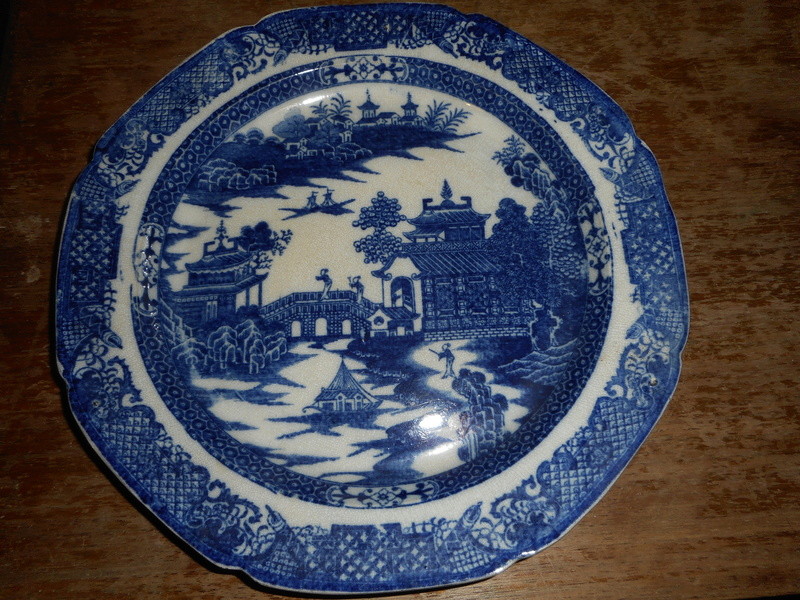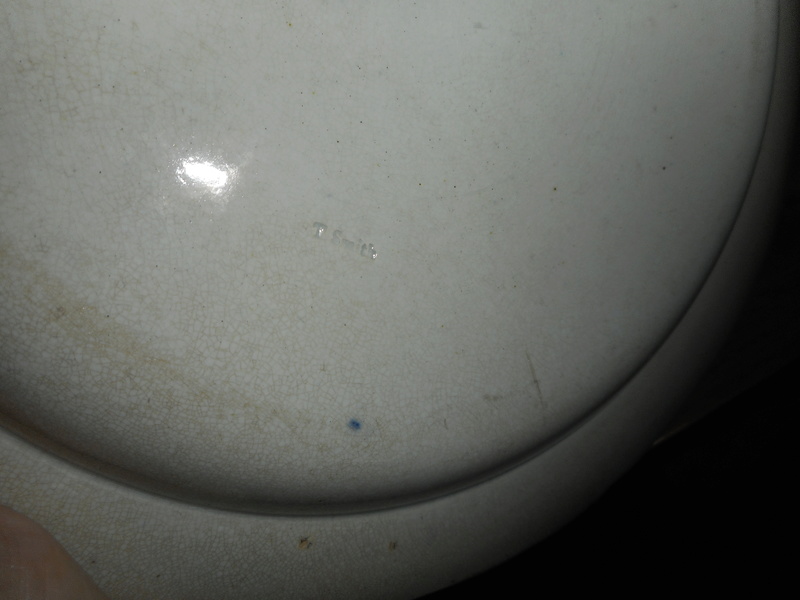Theophilus Smith (Tunstall)
2 posters
Page 1 of 1
 Theophilus Smith (Tunstall)
Theophilus Smith (Tunstall)
Is this Taylor Smith? Thank you
Last edited by NaomiM on April 15th 2018, 3:52 pm; edited 2 times in total (Reason for editing : Pos ID)

rattle624- Number of posts : 63
Location : Spain
Registration date : 2017-12-15

rattle624- Number of posts : 63
Location : Spain
Registration date : 2017-12-15
 Re: Theophilus Smith (Tunstall)
Re: Theophilus Smith (Tunstall)
This is an old one!
Theophulus Smith, Tunstall, Staffordshire 1790-97.
Theophulus Smith, Tunstall, Staffordshire 1790-97.
 Re: Theophilus Smith (Tunstall)
Re: Theophilus Smith (Tunstall)
Thank you!!! Wow, it does look old

rattle624- Number of posts : 63
Location : Spain
Registration date : 2017-12-15
 Re: Theophilus Smith (Tunstall)
Re: Theophilus Smith (Tunstall)
Thank you denbydump for providing me with the name of the maker. Armed with this information I contacted City of Stoke-on-Trent ,The Potteries Museum & Art Gallery and the curator there gave me some interesting information on this piece which I'm pasting below:
Thank you for sending the photographs of your piece. From the images it appears to be identical to a piece in our collection (and on display in our gallery. When we acquired our piece some years ago it was believed to be the only surviving marked piece of Theophilus Smith blue-printed pottery (a few figures are also known).
The pattern is not the standard Willow pattern but a chinoiserie design which includes elements which were to become part of the Willow pattern. Many such designs were produced in the late 18th century before the standard Willow pattern became the dominant blue-printed earthenware design
Smith’s story is a sad one. In 1788 he bought an estate in Tunstall, Stoke-on-Trent and built around 40 cottages, shops and an inn. By 1793 he had added a pottery and house for his family. The whole area was called Smithfield and the house, Smithfield Hall. Smith had a business agreement with a Liverpool merchant, Peter Wainwright. Unfortunately Mr Wainwright called rather too often when Mr Smith was away from home but when Mrs Smith was at home.
In 1801 Smith met Wainwright unexpectedly when the latter arrived at Tunstall. On their walk to Smithfield Smith attempted to shoot Wainwright three times and then then to stab him. Having failed to kill his victim, Smith then fled and was subsequently arrested in London. While awaiting trial at Stafford Gaol in 1802 he was allowed visitors. The children and governess visited first and then his wife. Smith drew two (!) pistols and shot his wife, wounding her slightly. He then turned the second pistol on himself and died instantly.
The factory and estate were sold and the new owner changed the name to Greenfield in order to erase the name and scandal associated with Smith.
With best wishes
Yours sincerely
Miranda Goodby| Senior Curator of Ceramics
Public Health and Adult Social Care Directorate
City of Stoke-on-Trent
The Potteries Museum & Art Gallery
Bethesda Street, City Centre, ST1 3DW
[/i]
Thank you for sending the photographs of your piece. From the images it appears to be identical to a piece in our collection (and on display in our gallery. When we acquired our piece some years ago it was believed to be the only surviving marked piece of Theophilus Smith blue-printed pottery (a few figures are also known).
The pattern is not the standard Willow pattern but a chinoiserie design which includes elements which were to become part of the Willow pattern. Many such designs were produced in the late 18th century before the standard Willow pattern became the dominant blue-printed earthenware design
Smith’s story is a sad one. In 1788 he bought an estate in Tunstall, Stoke-on-Trent and built around 40 cottages, shops and an inn. By 1793 he had added a pottery and house for his family. The whole area was called Smithfield and the house, Smithfield Hall. Smith had a business agreement with a Liverpool merchant, Peter Wainwright. Unfortunately Mr Wainwright called rather too often when Mr Smith was away from home but when Mrs Smith was at home.
In 1801 Smith met Wainwright unexpectedly when the latter arrived at Tunstall. On their walk to Smithfield Smith attempted to shoot Wainwright three times and then then to stab him. Having failed to kill his victim, Smith then fled and was subsequently arrested in London. While awaiting trial at Stafford Gaol in 1802 he was allowed visitors. The children and governess visited first and then his wife. Smith drew two (!) pistols and shot his wife, wounding her slightly. He then turned the second pistol on himself and died instantly.
The factory and estate were sold and the new owner changed the name to Greenfield in order to erase the name and scandal associated with Smith.
With best wishes
Yours sincerely
Miranda Goodby| Senior Curator of Ceramics
Public Health and Adult Social Care Directorate
City of Stoke-on-Trent
The Potteries Museum & Art Gallery
Bethesda Street, City Centre, ST1 3DW
[/i]

rattle624- Number of posts : 63
Location : Spain
Registration date : 2017-12-15
Page 1 of 1
Permissions in this forum:
You cannot reply to topics in this forum




